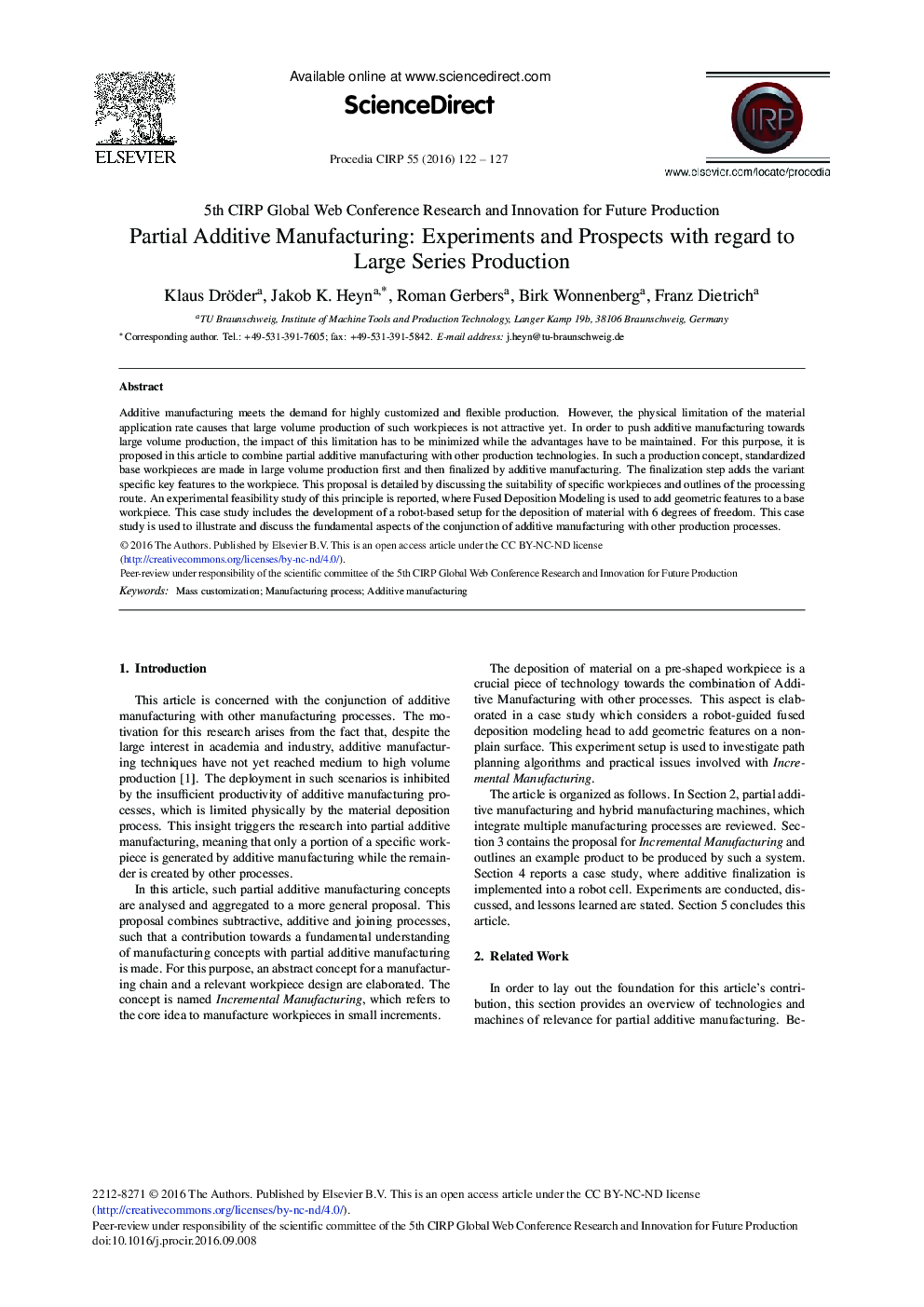| Article ID | Journal | Published Year | Pages | File Type |
|---|---|---|---|---|
| 5470028 | Procedia CIRP | 2016 | 6 Pages |
Abstract
Additive manufacturing meets the demand for highly customized and flexible production. However, the physical limitation of the material application rate causes that large volume production of such workpieces is not attractive yet. In order to push additive manufacturing towards large volume production, the impact of this limitation has to be minimized while the advantages have to be maintained. For this purpose, it is proposed in this article to combine partial additive manufacturing with other production technologies. In such a production concept, standardized base workpieces are made in large volume production first and then finalized by additive manufacturing. The finalization step adds the variant specific key features to the workpiece. This proposal is detailed by discussing the suitability of specific workpieces and outlines of the processing route. An experimental feasibility study of this principle is reported, where Fused Deposition Modeling is used to add geometric features to a base workpiece. This case study includes the development of a robot-based setup for the deposition of material with 6 degrees of freedom. This case study is used to illustrate and discuss the fundamental aspects of the conjunction of additive manufacturing with other production processes.
Related Topics
Physical Sciences and Engineering
Engineering
Industrial and Manufacturing Engineering
Authors
Klaus Dröder, Jakob K. Heyn, Roman Gerbers, Birk Wonnenberg, Franz Dietrich,
